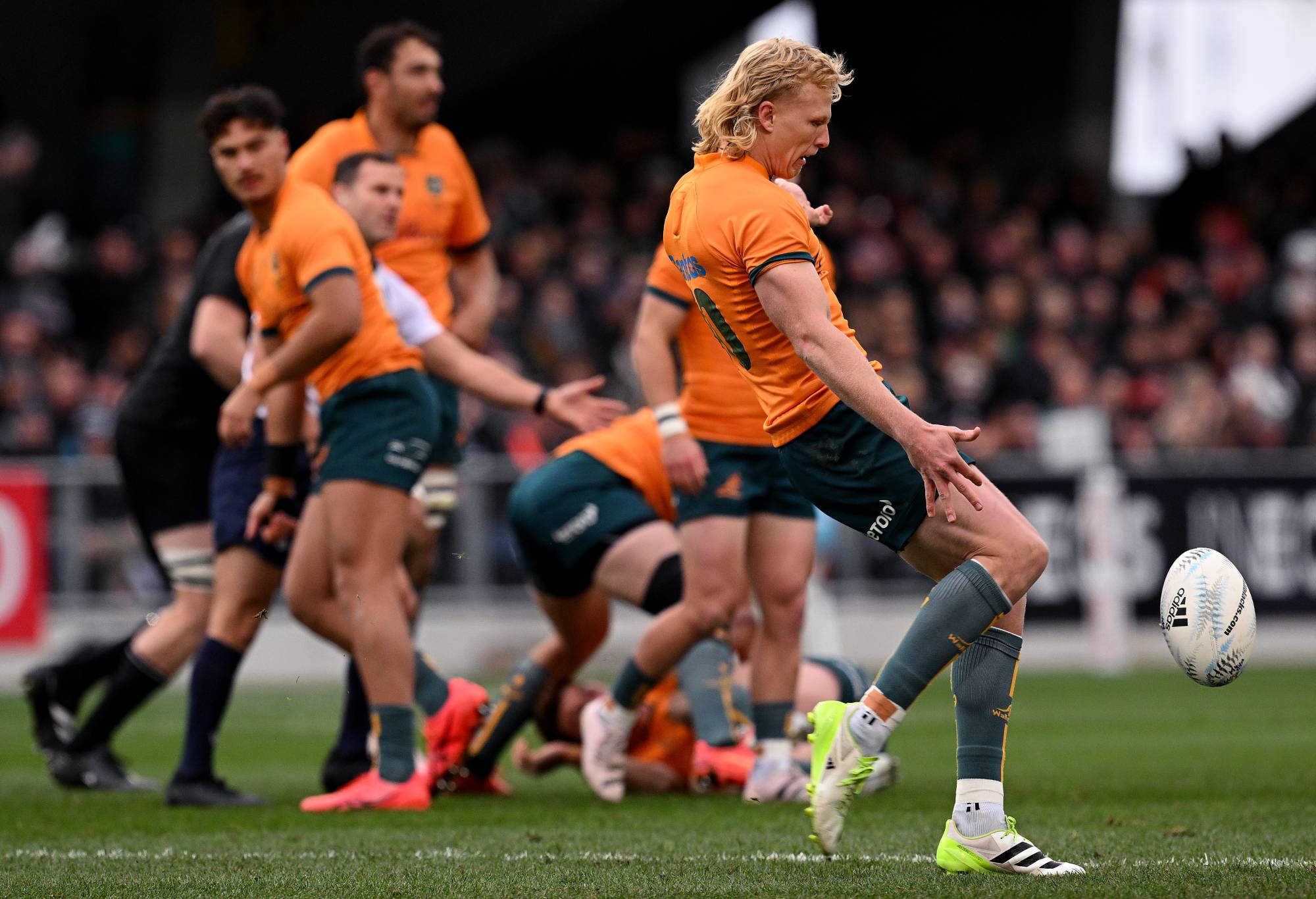Anyone who goes to watch a rugby game in Australia will be familiar with the loud and often aggressive voices from the stands urging players to stop kicking.
This cultural phenomenon can be witnessed at club and school games, no matter the age group or level of representation.
It would appear that to kick a rugby ball is un-Australian.
In my work as a rugby analyst, I often measure schools and club games to better understand what it takes to win at any level.
It is during such work that I will often stand pitch-side among parents while coding the game on my phone.
I can therefore attest with certainty that kicking in open play is not something you see often, apart from when teams kick to get out of their own 22, otherwise known as ‘kicking to get out of shit’.
It is very rare for players in the community game in Australia to kick tactically or ‘with momentum’, and players who do so risk a bollocking from the sideline.
Circa 1999 the game of rugby changed dramatically when rucking was outlawed, giving birth to the ‘jackal’.
By 2009 players like Heinrich Brussouw would make jackling, or ‘fetching’ an art form – something that can truly alter the course of games. Jackling meant that every single ruck became contested and more risky.
In short, it suddenly was no longer ‘smart’ to play multiple-phase rugby if scoring points, or winning games- was the end-goal.
Indeed in under 12 to under 16 boys rugby, 62% of possession is lost to turnovers or penalties at ruck time, while 28% is lost to errors and only 10% of possession is ‘surrendered’ for the sake of territory.
This is from data over eight years and comprises close to 300 schools and club games in this age bracket.

Carter Gordon and Quade during the Australian Wallabies training session. (Photo by Chris Hyde/Getty Images)
By comparison in the elite men’s game, around 18% of the ball will be lost to penalties and turnovers, while 36% is lost to error and 46% is surrendered for territory.
Teams like France, England and the Springboks surrender close to 60% of possession for territory by kicking, partly to reduce risk by entering less rucks, and partly to pressure opponents into making errors upfield.
My data shows that to win a rugby game at the elite level, you have to be able to manage territory.
Hence kicking is such a big part of the game. Kicking more than your opponent correlates strongly with winning outcomes at an elite level.
In games measured in 2023/24 for example the winning team in international rugby out-kicked their opponent 81% of the time.
At a junior level, territory is not as important because defences are not as organized and because you can still reliably aim to score from anywhere.
At this level, by contrast, 72% of winning teams pass the ball more than their opponents, while 91% of winning teams register more three-pass sequences than their opponents.
But while kicking is of less importance to a winning outcome, it’s still vitally important for skills development that players are encouraged to kick.
Firstly, kicking is a great way to exploit space. Many junior teams do not even use a full back from phase three onwards because the likelihood of being kicked at is so low.
The result is bucketloads of space at the back that one can only reliably reach by kicking to it.
Most coaches are incredibly vocal about players seeing space and playing to space, yet the selfsame coaches do not encourage kicking to space.
Secondly, kicking is a good tool to create unstructured play. It’s not always easy to attack from the back if you are isolated and under pressure.
At the junior level, very few players are able to make good decisions when attacking from kicks. This is why many kicks, even if poorly executed can have very good outcomes for the kicking team.
Lastly, it’s about skills development. For every kick that goes in the air, one or two or more players have to try and field it, and even more players have to support the fielder.

Carter Gordon of Australia kicks the ball. (Photo by Joe Allison/Getty Images)
In the process, multiple skills are being developed – skills that will be required more and more as players grow older and defensive organization improves.
I often try to explain to junior coaches that ball-in-hand running and carrying into rucks is like having a good forehand in tennis, while a good kicking game is your backhand.
You need both on attack and defence.
No tennis coach would work with a player and not develop his or her backhand, just as no rugby coach should ever discourage players from kicking a rugby ball.
It’s every bit as important as learning to scrum and jumping in a lineout, yet we don’t hear anybody shouting from the sideline if a front row hits the scrum.
Talking about other sports – it’s remarkable that a nation like Australia, so adept at Test cricket, with all its nuance and three-dimensional strategising, can be so reluctant to have players develop their kicking game in rugby union.
There is ample evidence to suggest that you can no longer win at senior level without the ability to kick well and attack well from kicks.
It is therefore paramount that we embrace this part of the game and become the best at it.



















You must be logged in to post a comment Login